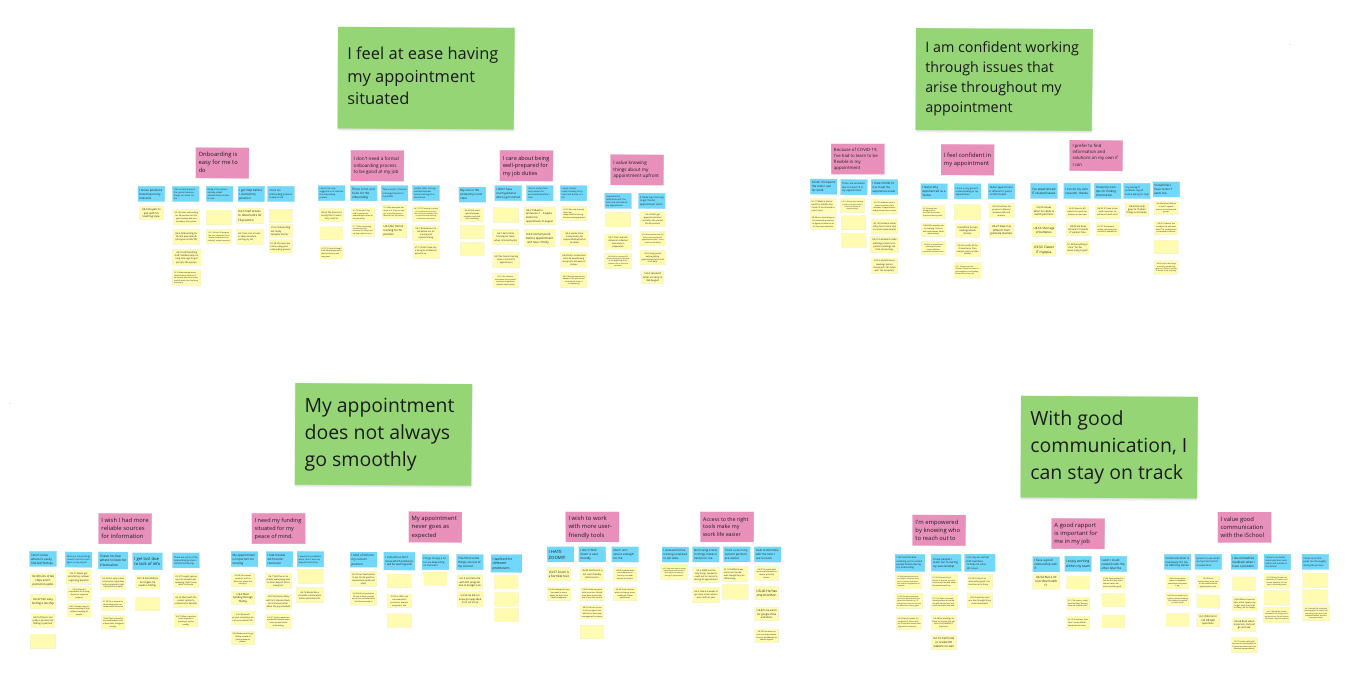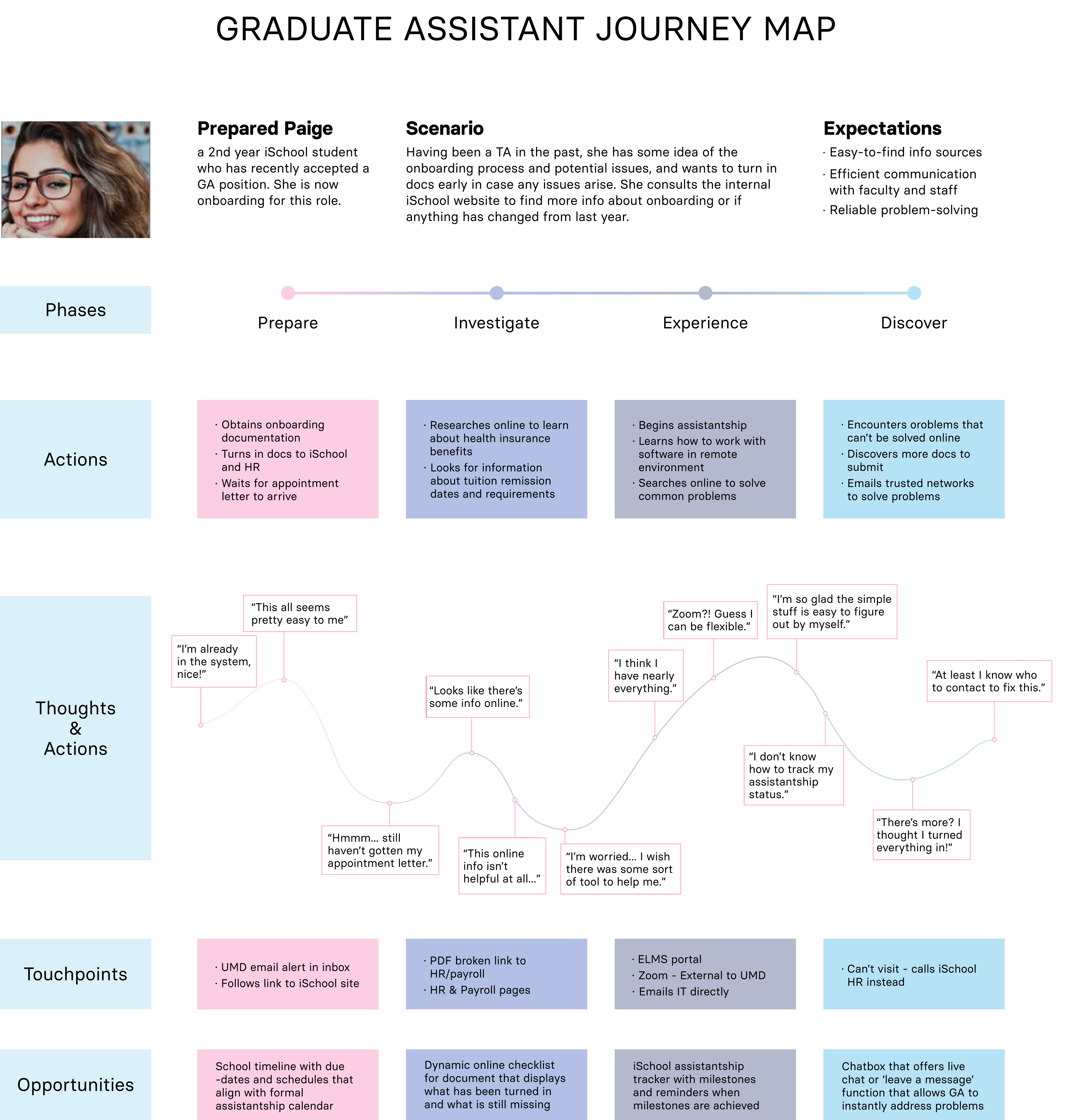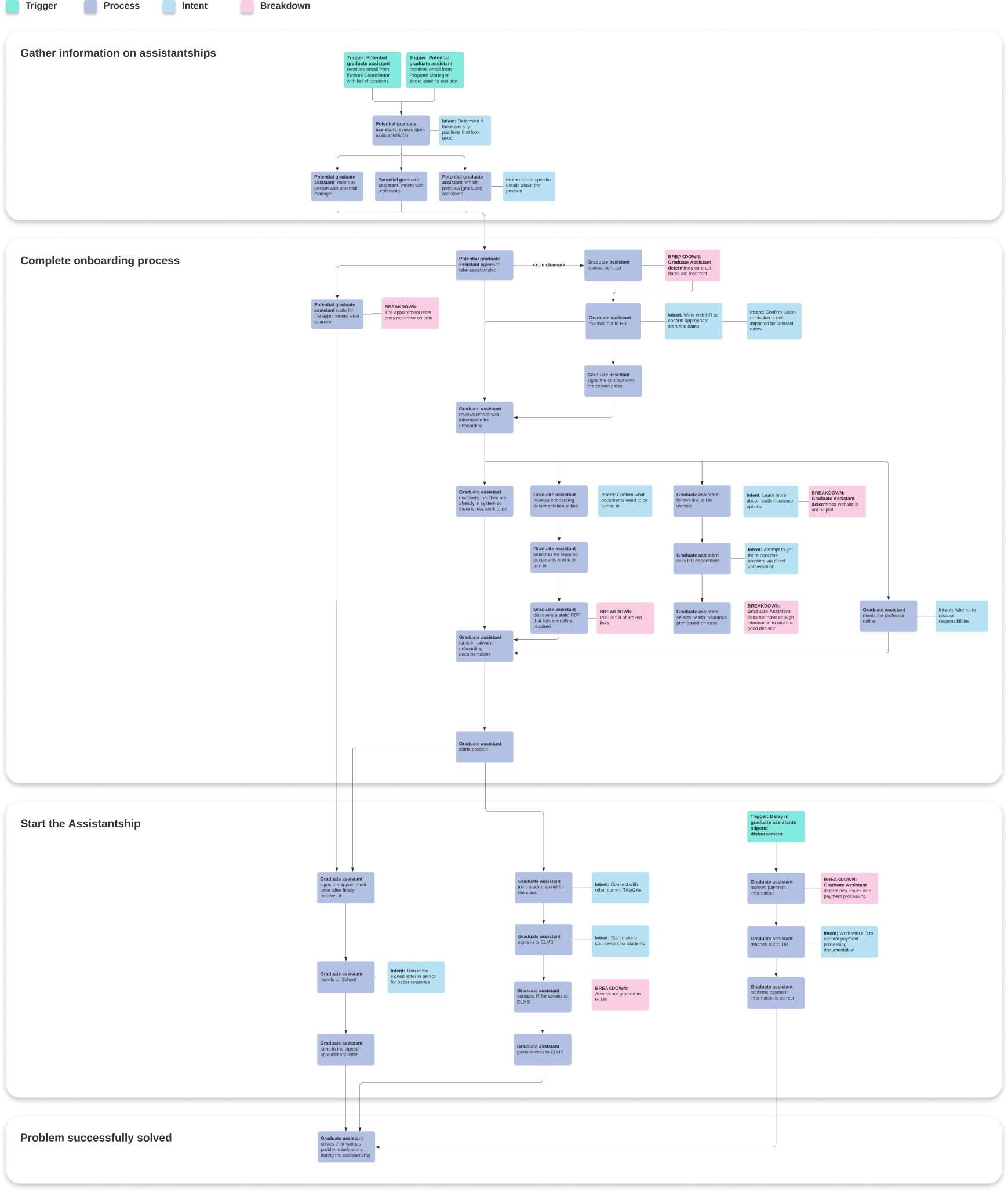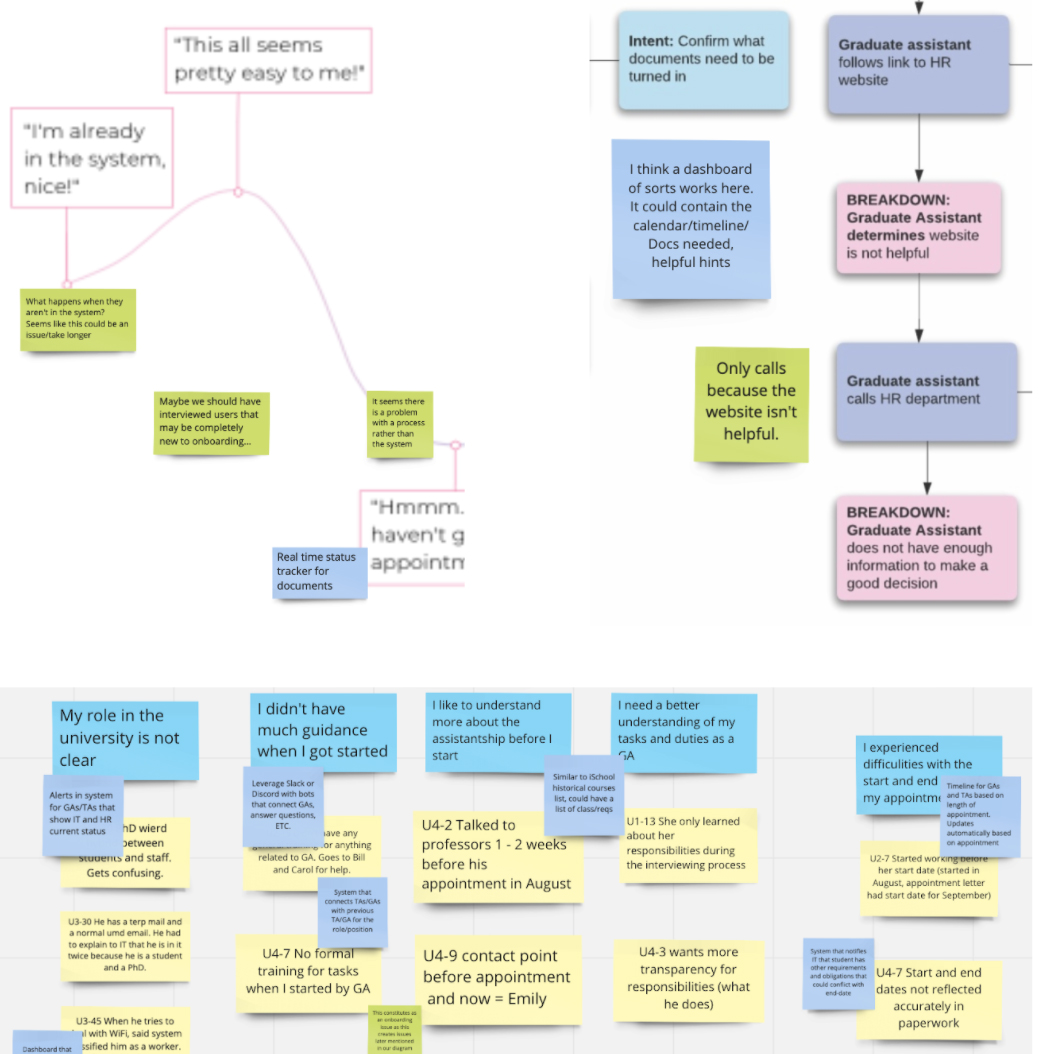CONCEPTUAL MODEL
Unified Information Dashboard
Using our hot ideas and visions, we conceptualized a web dashboard for users to stay updated on their onboarding and appointment status in addition to their problem-solving workflow.

iSchool Unified Services
UX research exploring the onboarding and problem-solving experiences of graduate and teaching assistants.
As part of my User Experience Research Methods course, we aimed to develop research and gather insights to the overall project of improving onboarding and problem solving for the iSchool's teaching assistants and graduate assistants.
Information Technology, College of Information Sciences, UMD
Yi Cai, Keaunna Cleveland,
Kay Jang, Markus Hines,
Amelia Short
Research, Design
6 Weeks
You’re excited to start your appointment; however, you come across issues you can’t get immediate feedback on which impacts your appointment experience:
You’re unsure of who to reach out to for help
You don’t have all of the information you need
You’re confused about the status of your documents
TAs and GAs should be able to complete the onboarding process (with confidence in their abilities), need ways to solve problems immediately, receive meaningful feedback in either virtual or in-person ways, and always have the choice to work on their own or with their peers.
Using our hot ideas and visions, we conceptualized a web dashboard for users to stay updated on their onboarding and appointment status in addition to their problem-solving workflow.


We interviewed 4 students who are currently TA's or GA's in the iSchool. The shortest interview took 25 minutes and the longest was 45 minutes. The goal of these interviews was to uncover insights about the participants’ experiences onboarding to their position. The following evening, we conducted 30 minute-long interpretation sessions for each interview, where we reviewed the interviews and generated notes that we felt would be key in aiding our design process.
The onboarding process is easier for TAs/GAs that have held previous TA/GA positions but difficult for new hires
TAs/GAs are anxious about receiving their appointment letter. They desire concrete start and end dates for appointment
The pandemic made it difficult to get immediate feedback regarding issues.
TAs/GAs feel like a nuisance constantly seeking help for problem solving.
To make sense of and clarify the data we had gotten from our interviews using what is called an “affinity diagram”. The goal of this was to reveal in one place all the issues, worries, and key elements of the users’ lives relevant to the project focus.

The goal of this journey map is to understand the experiences (both good and bad) a GA or TA might encounter during onboarding. In this scenario, Paige is in the process of gathering and turning in various onboarding documents, while simultaneously investigating benefits such as tuition remission and health insurance.

Through the data collected from our interviews, this model identifies some specific actions in the process, the assistants’ intent behind them, and issues and pain points that they encounter.

To explore our understanding of our user data, we went through our affinity diagram and both of our models, writing notes on sections that triggered ideas or issues.
First, we focused on problems and breakdowns within each of our models’ processes. This allowed us to create an “issues list” that detailed information gaps and problems that impacted the user’s world. We then created a list of “hot ideas”, imaginative thoughts, and creative ideas meant to initiate system and design thinking.

The inclusion of this group might support the findings discussed in previous sections or may provide new insight on the TA/GA onboarding and problem-solving processes.
The inclusion of this group could provide much-needed data on administrators’ workflows, specifically how they address problems TAs and GAs encounter.